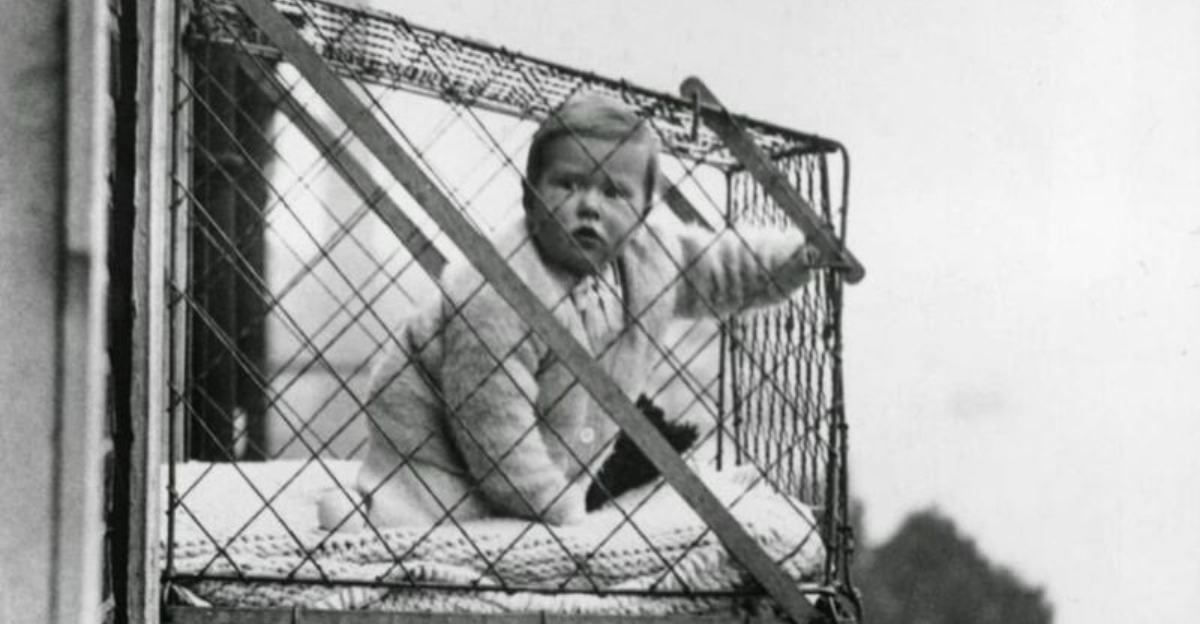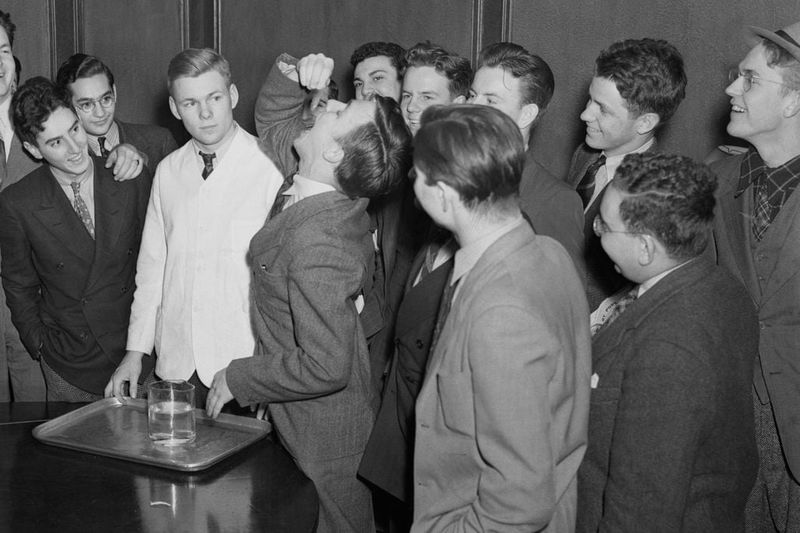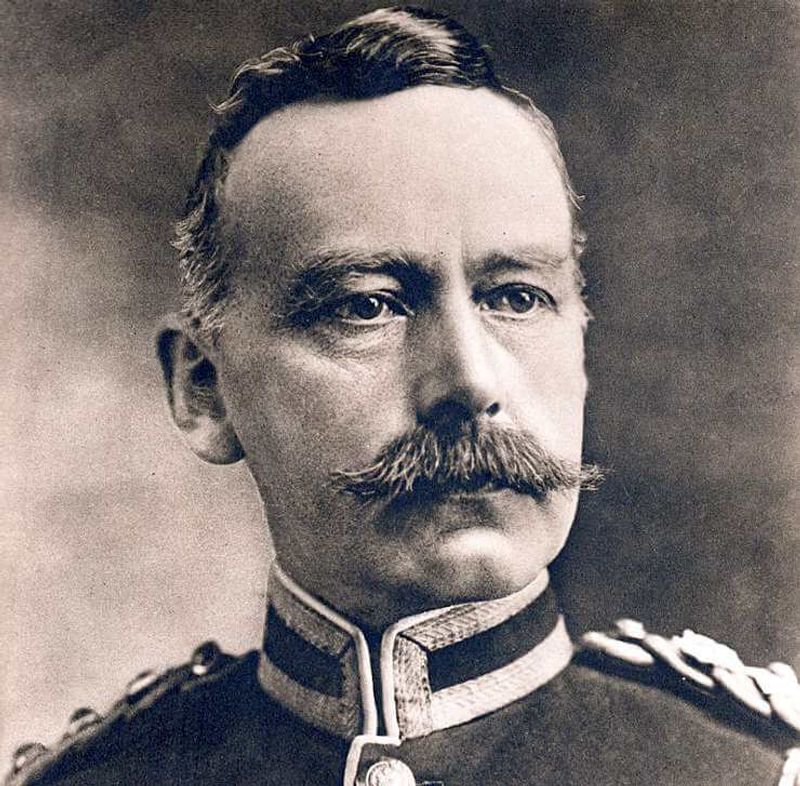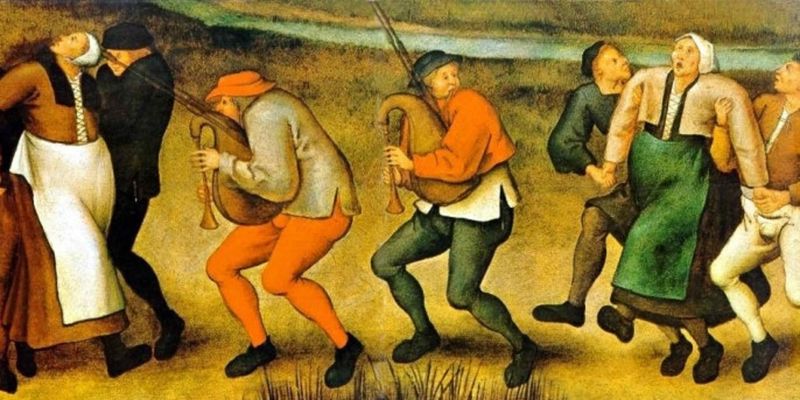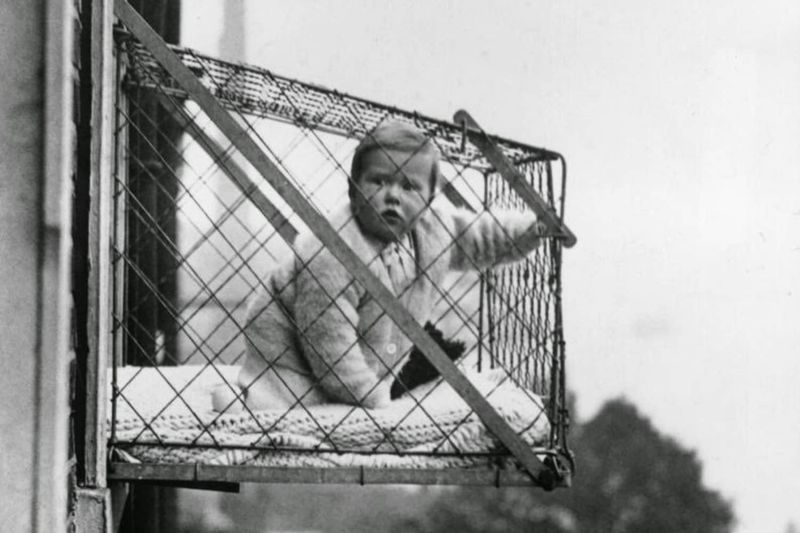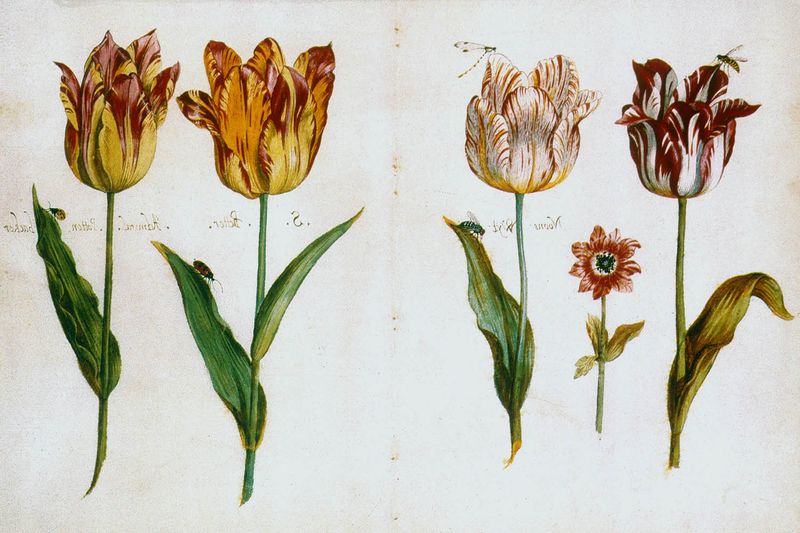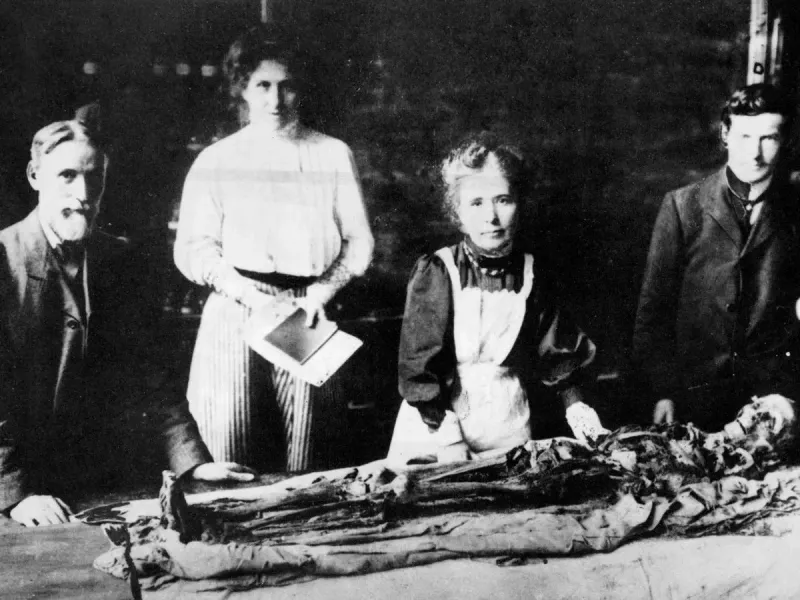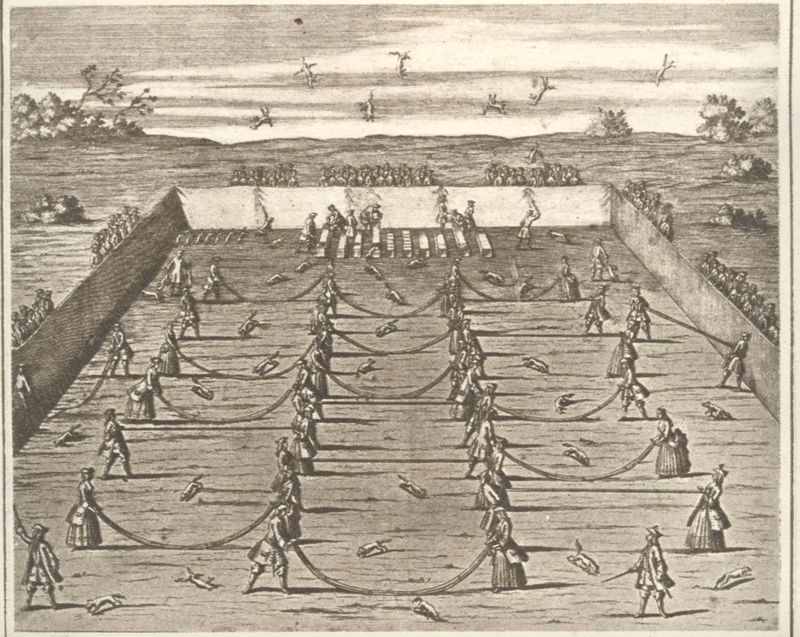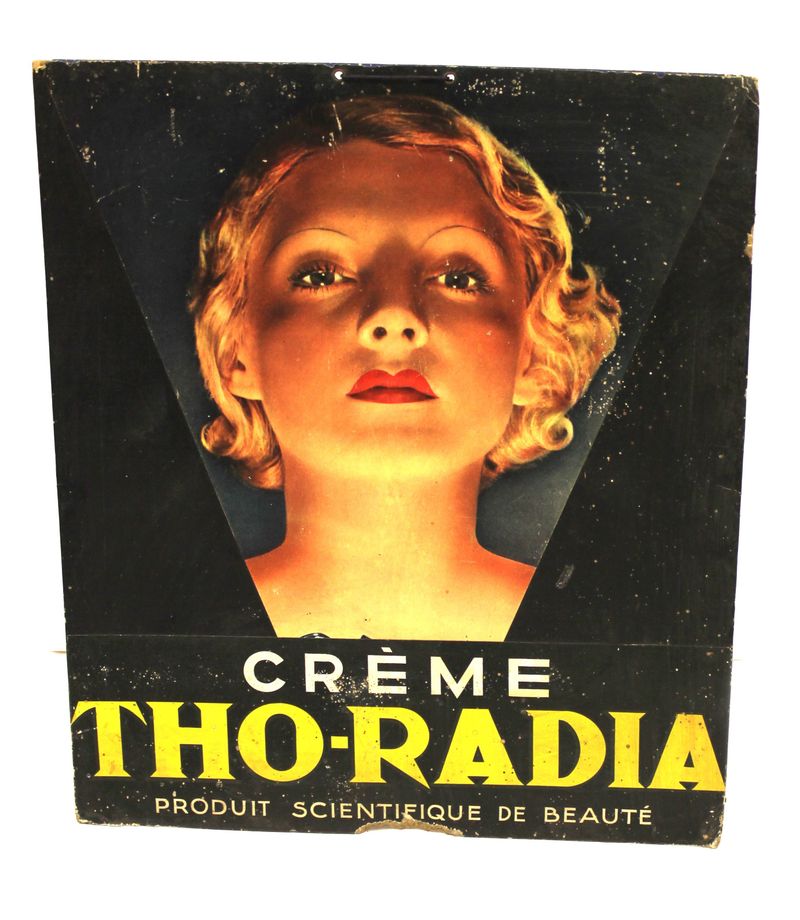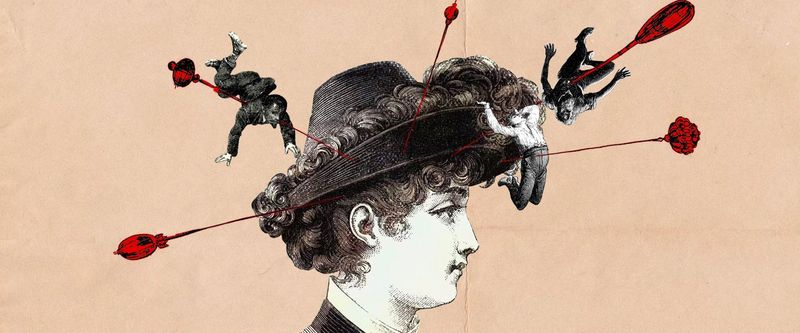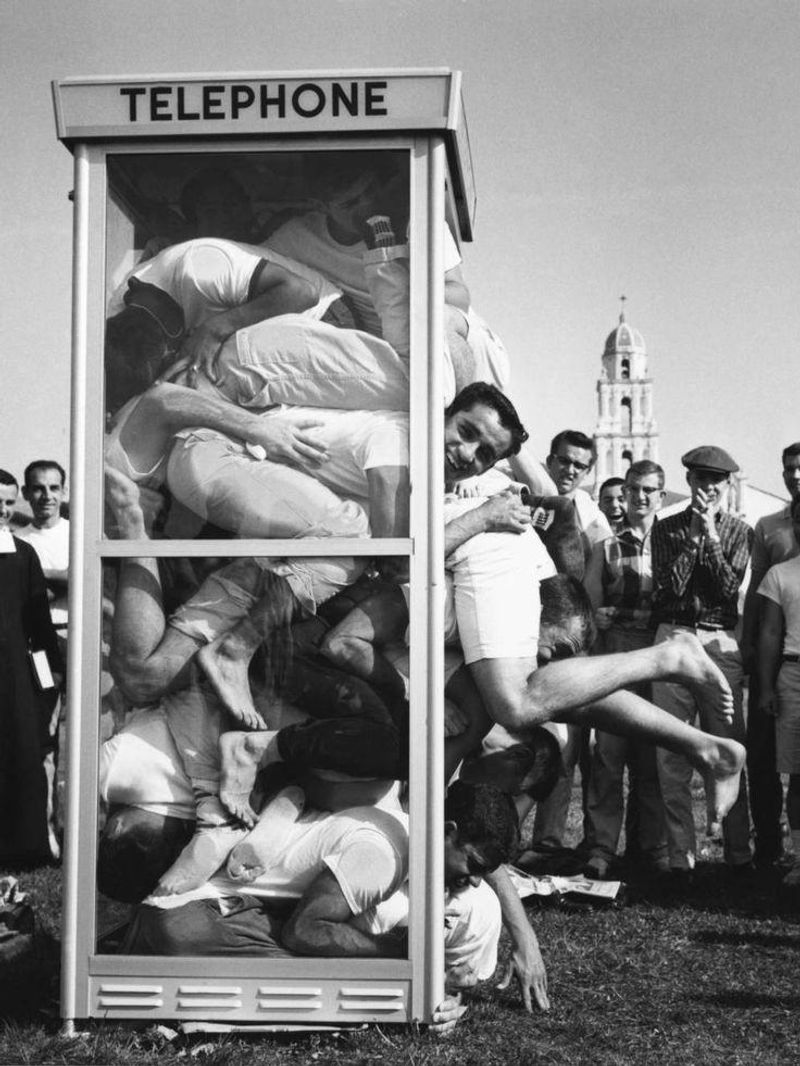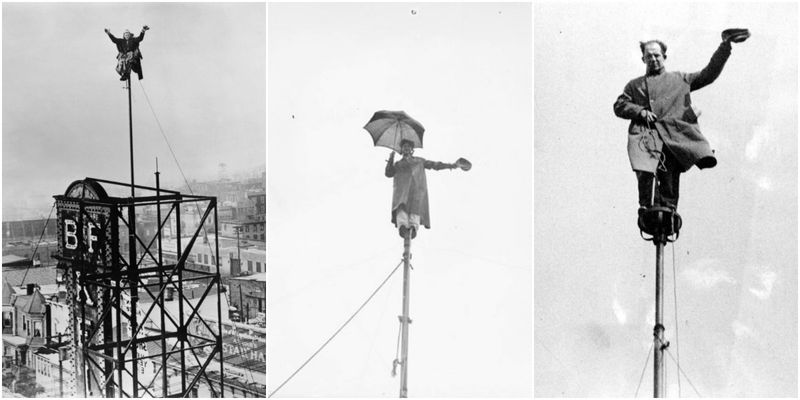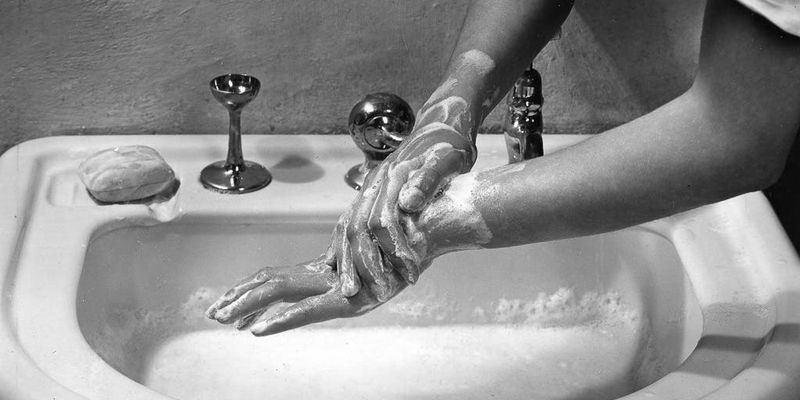Explore 15 bizarre historical trends that eclipse modern TikTok fads in their eccentricity. From the curious to the downright dangerous, these fads provide a fascinating glimpse into the quirks of human behavior throughout history.
1. Goldfish Swallowing (1930s, Harvard) 🐟
Amidst the roaring 1930s at Harvard, students found entertainment in the oddest of places—live goldfish. What started as a peculiar dare among friends soon spiraled into a competitive craze. One student, determined to outdo his peers, swallowed an astonishing 42 goldfish in one go.
This strange endeavor wasn’t just for fun; it was about making a mark, perhaps even setting a world record. The bizarre trend spread, with college campuses nationwide joining the quirky competition. Unbelievably, this odd spectacle was seen as a rite of passage in some circles, showcasing youthful bravado.
2. Dueling with Mustaches (19th Century, Europe) 🎩
In 19th-century Europe, honor was paramount, sometimes leading to peculiar displays. Enter the bizarre trend of mustache dueling, where gentlemen engaged in hair-raising contests, literally tying their mustaches together. The duel concluded when one participant yanked out his adversary’s hair.
This unconventional form of conflict resolution was fueled by a mix of pride and perhaps a bit too much brandy. It was more about the spectacle and maintaining a sense of superiority than causing harm. Though strange, it held a curious place in the social customs of the time, highlighting the importance of personal honor.
3. Tapeworm Diet (Victorian Era) 🪱
Victorian beauty standards were unforgiving, leading to drastic measures like the tapeworm diet. Women would ingest pills containing tapeworm eggs, hoping the parasites would consume excess calories. A risky endeavor, it promised quick weight loss but at a terrifying cost.
This dangerous trend underscored the lengths to which individuals would go to conform to societal ideals. The presence of tapeworms sometimes led to severe health complications, as these intruders didn’t distinguish between unwanted calories and vital nutrients.
Horrifying yet captivating, this dietary trend serves as a cautionary tale against extreme beauty regimens.
4. Dancing Plagues (1518, Strasbourg) 💃
In the summer of 1518, the city of Strasbourg witnessed a phenomenon like no other. Hundreds of residents took to the streets, dancing uncontrollably for days on end. This unusual plague afflicted both young and old, with some tragically dancing until they collapsed or died.
Historians speculate about the cause—mass hysteria, ergot poisoning, or perhaps an infectious rhythm that couldn’t be ignored. The dancing plague remains one of history’s greatest mysteries, a testament to the power of collective mania.
Amidst the chaos, it became a haunting reminder of how quickly normalcy can be disrupted.
5. Baby Cages (1930s, London) 🏙️
In 1930s London, with limited outdoor spaces, some urban parents turned to an unusual solution for ensuring their babies received fresh air—wire cages hanging outside apartment windows. These ‘baby cages’ were seen as innovative, albeit bizarre, solutions to cramped living conditions.
Parents believed these contraptions offered their children vital exposure to the elements, a thought that seems dangerous today. Despite the strange appearance, the trend spoke to the era’s parenting innovations and the lengths to which people would go for perceived health benefits.
The sight of infants suspended high above the streets remains a curious historical image.
6. Tulip Mania (1637, Netherlands) 🌷
In the 1630s, the Netherlands experienced one of the first economic bubbles in history, centered around the tulip bulb. Tulip Mania saw prices for certain bulbs rise to extraordinary levels, with some bulbs valued as highly as a luxurious Amsterdam home.
The frenzy was driven by speculation, with everyone from nobles to commoners eager to invest. However, the bubble burst as quickly as it had formed, leaving many in financial ruin.
This speculative craze serves as a cautionary tale about the dangers of market speculation and the ephemeral nature of perceived value.
7. Mummy Unwrapping Parties (Victorian Era) ⚰️
The Victorian fascination with ancient Egypt manifested in the most macabre of ways: mummy unwrapping parties. Wealthy Europeans would purchase mummies and host gatherings where these ancient remains were ceremoniously unwrapped.
These events were both thrilling and horrifying, offering a glimpse into the exotic unknown. Beyond the spectacle, some remains were ground into powder for ‘medicinal’ purposes or even used as paint pigments.
Though the trend is unsettling today, it highlights the era’s obsession with antiquity and the lengths to which society went to satisfy its curiosity.
8. Fox-Tossing (17th-18th Century, Europe) 🦊
In the courts of 17th and 18th-century Europe, fox-tossing emerged as a popular form of entertainment among the aristocracy. Participants used a sling to launch live foxes high into the air, measuring success by height, much to the horror of animal lovers.
This cruel sport was enjoyed during grand fetes, with nobles competing to showcase their strength and skill. Despite its brutality, fox-tossing was seen as a test of agility and coordination, reflecting the era’s disconnect between leisure and compassion.
It remains a stark reminder of the period’s often callous approach to entertainment.
9. Radioactive Beauty Products (1920s-30s) ☢️
The allure of a radiant complexion led to a dangerous beauty trend in the 1920s and 30s: radioactive cosmetics. Products like face creams and toothpaste, laced with radium, promised a luminous glow, but the consequences were dire.
Consumers, unaware of the hazards, used these products regularly, believing in their rejuvenating powers. It wasn’t until the dangerous effects, such as cancer, became apparent that the trend’s lethal nature was acknowledged.
This unsettling chapter in cosmetic history is a grim reminder of the potential perils lurking behind enticing promises.
10. Hat-Pin Panic (Early 1900s, USA/UK) 👒
At the turn of the 20th century, fashion met defense in the form of the hat pin. Women in the USA and UK wore hats secured by long, sharp pins that doubled as protection against street harassment.
These improvised weapons empowered women but also sparked controversy. Cities eventually banned long hat pins, labeling them as dangerous weapons, leading to fierce debates on women’s rights and safety.
The hat-pin panic reflects an era where fashion became a tool of empowerment, igniting conversations about personal safety and societal norms.
11. Phone Booth Stuffing (1950s, USA) 📞
In the playful spirit of the 1950s, college students across the USA engaged in a peculiar pastime: phone booth stuffing. The trend involved cramming as many people as possible into a single booth, testing limits and friendships alike.
This lighthearted challenge saw records set and broken, with one booth reportedly accommodating 25 individuals. It was a testament to post-war camaraderie and the youthful pursuit of fun.
Though it seems quaint today, phone booth stuffing captured the essence of a simpler time, where creativity and community fueled the most entertaining feats.
12. The Great Emu War (1932, Australia) 🦘
In 1932, Australia faced an unusual adversary: the emu. The Great Emu War, a bizarre chapter in Australian history, was an attempt to curb the bird population wreaking havoc on crops.
Armed soldiers were deployed, yet the emus proved to be formidable foes. Despite firing 2,500 bullets, only 50 emus were culled, leading to a tactical retreat.
This peculiar conflict, both absurd and endearing, highlights nature’s resilience and the unpredictable challenges of wildlife management.
13. Hobble Skirts (1910s) 👗
The early 1910s saw the rise of the hobble skirt, a garment so tight it restricted movement, forcing women to take mincing steps. Introduced by French designer Paul Poiret, it symbolized luxury and fashion at the expense of practicality.
These skirts, while elegant, were impractical and even dangerous, sometimes leading to falls and injuries. Yet, for a brief period, they were all the rage among fashion-forward women.
The hobble skirt era underscores the lengths to which fashion can go, sacrificing comfort and utility for the sake of style.
14. Flagpole Sitting (1920s, USA) 🚩
During the 1920s, nothing epitomized daring feats quite like flagpole sitting. Competitors would sit atop flagpoles for extended periods, vying for records and public adoration.
This peculiar trend was part endurance test, part spectacle, capturing the public’s imagination. One record-setting individual endured 21 days perched above the ground.
Flagpole sitting highlighted the era’s fascination with stunts and the lengths individuals would go to achieve notoriety, balancing on the edge of reason and folly.
15. Soap-Eating Challenge (Early 1900s) 🧼
Before modern safety regulations, children in the early 1900s amused themselves with the bizarre soap-eating challenge. This odd dare involved consuming bars of soap, often resulting in soapy mouths and upset stomachs.
The challenge, though clearly unpleasant, captured the spirit of youthful rebellion and curiosity. Despite the unsavory taste, the challenge spread among daring youths, eager to prove their mettle.
The soap-eating challenge is a quaint reminder of bygone days, where simple curiosities often led to peculiar pastimes.
